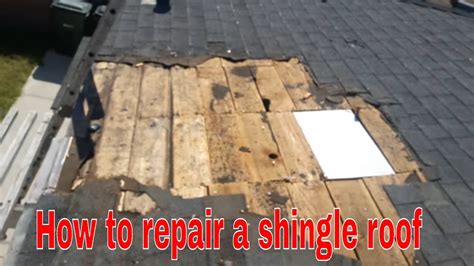Shingle Repair: Removing Paint Before It's Too Late
Asphalt shingles are the workhorses of roofing, providing reliable protection for decades. However, even the toughest shingles are vulnerable to damage, and one common culprit is paint. While a fresh coat of paint on your house might seem harmless, it can severely compromise the lifespan and integrity of your shingles if not properly addressed. This article delves into the crucial importance of removing paint from shingles before it's too late, exploring the damage it causes and providing practical solutions for repair.
Why is Paint Harmful to Shingles?
Paint, particularly oil-based paints, significantly impacts the performance of asphalt shingles in several ways:
-
Prevents Ventilation: Asphalt shingles need to breathe. The underlying layers need to dry out properly to avoid moisture buildup, which leads to rot and premature failure. A thick coat of paint acts as a sealant, trapping moisture and heat, creating the perfect breeding ground for mold, mildew, and algae.
-
Reduces Flexibility and Elasticity: Shingles are designed to expand and contract with temperature fluctuations. Paint reduces their flexibility, making them brittle and prone to cracking and curling, especially at the edges. This reduces their ability to withstand wind and other weather elements.
-
Blocks UV Protection: Asphalt shingles contain granules that provide essential UV protection. A layer of paint obscures these granules, diminishing their ability to shield the underlying asphalt from the sun's harmful rays. This accelerates degradation and shortens the shingle's lifespan.
-
Adds Unnecessary Weight: Adding weight to your roof, particularly to older or weakened shingles, increases the stress on the underlying structure, potentially leading to structural damage.
How to Tell if Paint is Damaging Your Shingles
Identifying paint damage on shingles requires a thorough inspection. Look for:
-
Curling or Cracking: Shingles lifting at the edges or showing cracks are strong indicators of paint-related damage.
-
Blistering or Peeling Paint: This is a clear sign that the paint isn't adhering properly and is disrupting the shingle's integrity.
-
Moisture Buildup: Check for signs of mold, mildew, or algae growth, all of which thrive in moisture-trapped environments created by paint.
-
Granule Loss: Examine the shingle surface for excessive granule loss, a sign of premature degradation often exacerbated by paint.
Removing Paint from Shingles: A Step-by-Step Guide
Removing paint from shingles can be challenging and time-consuming, but it's often necessary to save them. Here's a safe and effective approach:
-
Safety First: Always wear appropriate safety gear, including gloves, eye protection, and a respirator, especially when working with paint removers.
-
Assess the Damage: Determine the extent of the paint damage to plan your approach. Minor paint splatters might require different techniques than extensive coating.
-
Choose the Right Tool: For small areas, a stiff bristle brush and a paint scraper might suffice. For larger areas, consider using a power washer (low pressure setting) or a chemical paint remover. Always test any product in an inconspicuous area first.
-
Careful Removal: Gently scrape or brush away the paint, avoiding excessive pressure that could damage the shingles further. If using a chemical remover, follow the manufacturer's instructions carefully.
-
Clean Thoroughly: After removing the paint, rinse the shingles with clean water to remove any residue. Allow the shingles to dry completely before assessing any further damage.
What if the Damage is Too Extensive?
If the paint damage is severe, and the shingles are beyond repair, replacement is the best option. Attempting to save severely damaged shingles could lead to more extensive and costly repairs down the line. Consulting a qualified roofing contractor is recommended to assess the situation accurately and provide the best course of action.
Frequently Asked Questions (PAA)
How long does it take for paint to damage shingles?
The timeframe depends on several factors, including the type of paint, the amount applied, weather conditions, and the shingle's quality. Oil-based paints generally cause damage more quickly than water-based paints, and prolonged exposure to moisture and sun accelerates the degradation process. Damage might become noticeable within a few months or take several years to become significant.
Can I use a pressure washer to remove paint from shingles?
While a low-pressure setting might be effective for removing loose paint, high-pressure washing can damage shingles, stripping away granules and potentially causing further harm. Use caution and test in an inconspicuous area first.
What type of paint is most harmful to shingles?
Oil-based paints are generally considered more damaging to asphalt shingles than water-based paints due to their slower drying time and tendency to trap moisture.
Can I prevent paint from damaging my shingles?
Careful preparation and protective measures during painting are crucial. Use painter's tape to mask the edges of the roofline and cover shingles thoroughly with drop cloths or plastic sheeting. If paint does get on your shingles, clean it up promptly.
By understanding the risks of paint on asphalt shingles and taking proactive steps for removal and prevention, you can significantly extend the lifespan of your roof and avoid costly repairs down the road. Remember to always prioritize safety and consult professionals when necessary.

